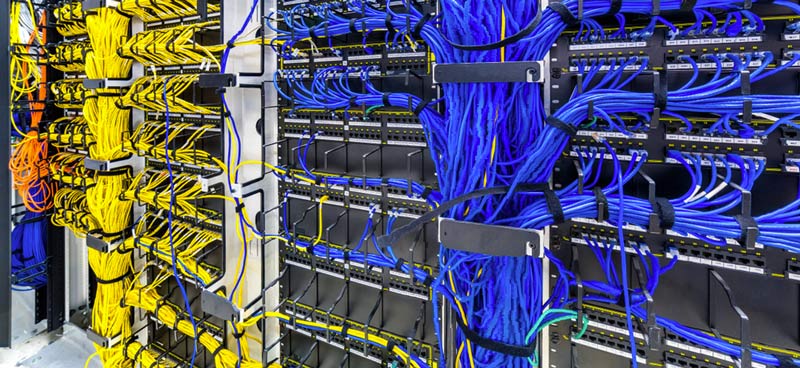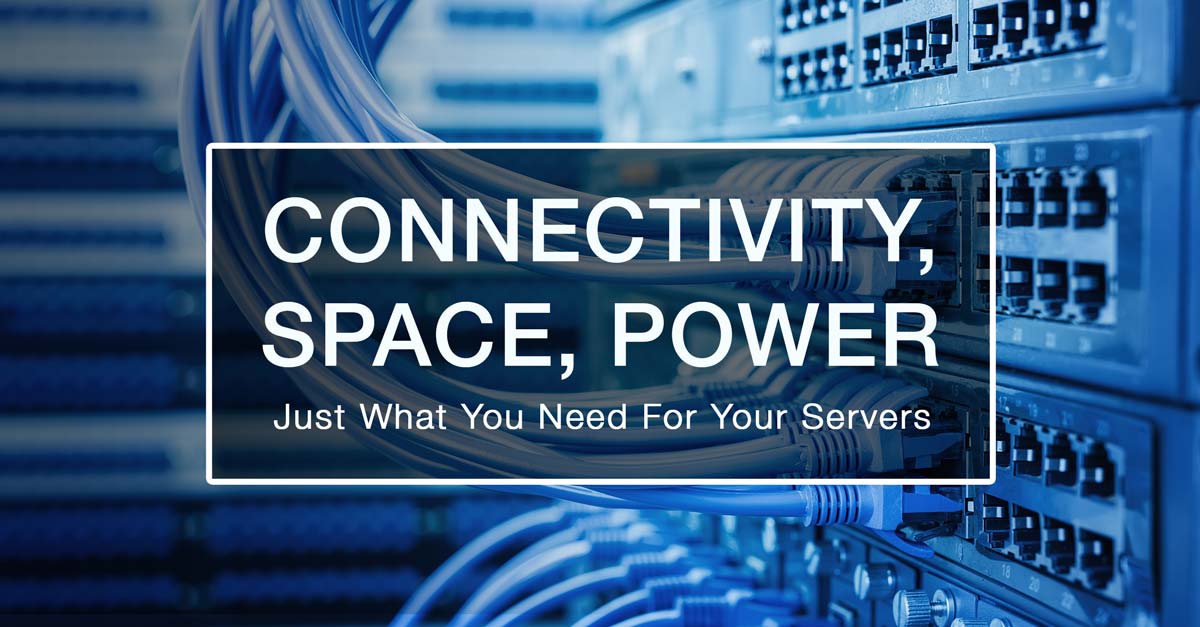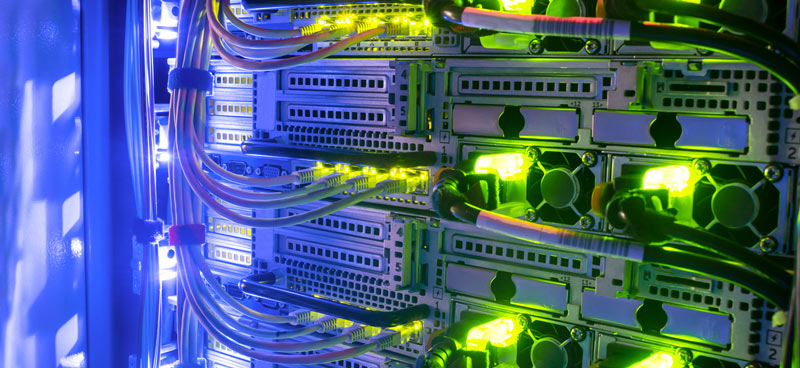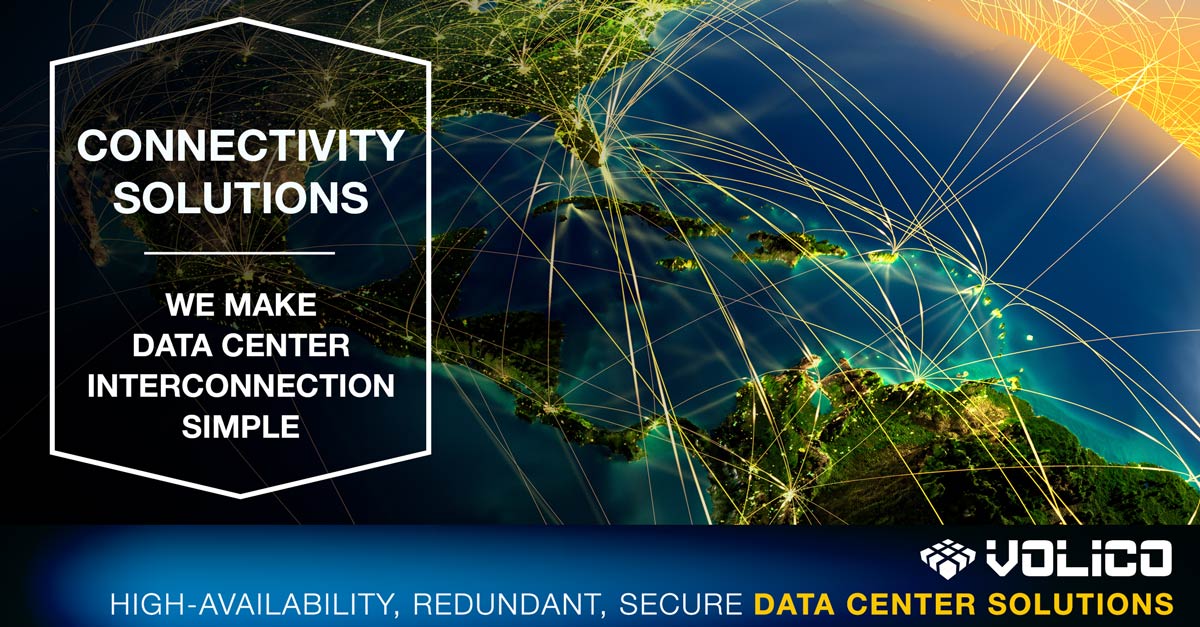Data center interconnection capacity is one of the key considerations customers make when looking for a data center. Businesses want to ensure they’re migrating their IT infrastructures to a data center whose interconnection capabilities can help them achieve their current and future goals.
Colocation data centers play a key role here, offering many advantages. Colocation is preferred by organizations looking for a quick digital transformation, and it is the go-to solution for edge support. However, it’s often the choice of companies wanting to give up on their on-premises solutions for something with more benefits. The robust security solutions, support, flexibility, and easy scalability – make colocation data centers attractive on the market, offering many reasons for enterprises to move their workloads. Additionally, data center interconnection through colocation makes data exchange easier and more secure for partners, with the extra perks of low latency.
Excellent data center connectivity can spur growth and increase revenue — and the two factors are key to fostering customer confidence and trust. Considering that the data center industry is experiencing unprecedented growth and transformation thanks to generative AI, the industry is optimizing solutions to meet the increasing demands.
In this article, we’re going to explore data center interconnection and take a look at how having excellent data center connectivity contributes to success!

Customer-centric data center essentials
Data centers looking to offer stellar services must have a robust interconnection setup consisting of content delivery ecosystems, cloud, IPSs, SaaS, and cloud providers.
- Several data center connectivity options tailored to meet your specific business needs
- Direct access routes to all leading cloud service providers
- Interconnection across the client’s digital network
For optimal data center interconnection, the facility should be;
• Carrier-neutral
• 5G compliant
• Designed to support edge applications and the Internet of Things (IoT)
• Able to support one-to-one and one-to-multiple connections
In essence, a successful data center today is defined not just by its capacity but also by the strength and versatility of its interconnection strategy.
The pertinent questions that arise, therefore, are:
- What constitutes an efficient interconnection framework in a modern data center?
- What are the essential components, and how should they be implemented to ensure optimal performance and future growth?
In the following, we will analyze the must-haves of interconnection and network connectivity.
What is Data Center Interconnection?
Data centers serve as a central hub where networks, cloud services, and enterprises converge to host their physical IT infrastructure.
A data center that offers interconnection services allows organizations housed in the facility to exchange data through high-speed packet-optical connectivity. This data center connectivity option enables businesses to exchange data via private, secure, and fast connections. Interconnection can be a physical link connecting two or more points or a flexible virtual one.
Advantages of Data Center Interconnection
Robust interconnection goes beyond data exchange between organizations. For a data center, it means:
Delivering Low Latency
While email, video chats, and reporting tools don’t require low latency, the scenario differs for heavy tasks and applications.
If your customer’s devices run on IoT, for instance, they need to communicate and share data in real time. The same goes for immersive experiences like the metaverse, virtual reality, or gaming.
Comprehensive data center interconnection allows providers to optimize the latency spectrum and use tailored, flexible deployments that enable business-critical tasks to generate a positive ROI. Whether hosted on-premises, at the edge, or in the cloud, efficient data flow and responsiveness are key to success.
Satisfying Industry Demands
Offering full-scale interconnection enables a data center to meet industry standards regarding compliance and support for industry workflows as follows;
- Compliance: When a data center has an interconnection certification, customers can know that their facility complies with industry mandates and regulations.
- Industry Workflows: Digital transformation is fueling an unprecedented demand for unique interconnection needs that are tailored to specific industries.
Digital businesses experience increases in data storage demands, and as the volumes of data grow, the need to protect important infrastructures becomes more and more critical. Since data center interconnection enables secure, private exchange of data between two companies, it can satisfy specific industry demands like financial services where security and compliance are first and foremost.
Creating a Solid Digital Ecosystem
Data center interconnection infrastructure can influence the success of the establishment. With a robust framework, the facility can develop an ecosystem to link customers through a native digital supply chain stretching from the core to any edge, including wireless and wireline infrastructures.
The denser the ecosystem, the easier it is to:
- Create automated, frictionless, and personalized experiences
- Grow your core business
- Expand portfolio and network
- Generate revenues from new services and products
Further, providing virtual and physical connections between companies in the same ecosystem is secure and delivers the lowest latency.
Moreover, direct links to major cloud providers (CSPs) allow high performance and better cloud service usage while cutting down data egress fees.

Data Center Interconnection and Network Connectivity Checklist
When looking for a partner, everyone wants to find one that’s good enough to become a trusted long-term advisor. Choosing the right colocation provider from the beginning allows for a seamless collaboration that’s aligned with your long-term business objectives.
Before making critical decisions about your data center setup, it’s crucial to understand the must-haves for efficient interconnection and network connectivity. Strategically planning your network infrastructure, colocation, and interconnection with relevance for your specific case in mind will undoubtedly benefit you in the future.
Here’s a checklist to guide you through this process.
Infrastructure Positioning
The farther apart data centers are, the longer it takes for the data to travel.
It is essential, therefore, to pick the most strategic position for low-latency data center interconnection and connectivity.
Ideally, you want a location that allows you to use the latest technology, including fiber optic cabling, and improve your infrastructure to help minimize the time it takes to process data.
Security Features
Interconnection involves transmitting sensitive data across networks. Therefore, it is crucial for interconnection setup to support data protection.
In addition, you should be able to perform core architectural adjustments, such as cloud fabric improvements, without compromising data security. You want a data center interconnection solution that allows you to assign isolated units within the facility. Understanding how private connectivity can be leveraged and what influences it can help you make the best decisions on business opportunities and expansion in the long term.
Flexible Capacity
A robust interconnection and connectivity network should be able to handle large volumes of data traffic. Also, the interconnection solution should expand as the number of customers hosted in your facility continues to grow. In order to handle seasonal peaks in activity or eventual sudden increases in workflows, it’s important to check if the interconnection provider can handle the bandwidth requirements and adjustments for your needs.
You might want high-capacity solutions and automated routing protocols to move data seamlessly across applications.
Operation Capabilities
Businesses are continually cutting down manual tasks and increasing data processing automation to help them minimize errors. A data center interconnection solution that allows automated connectivity can significantly increase speed and efficiency while reducing the chances of configuration errors.
Cost
And lastly, choosing a solution offering identifiable opportunities for saving on costs is also essential. Compare the options available for your specific case and balance the advantages/disadvantages. There are interconnection options with lower costs. Look into the advantages offered by direct connectivity as well, and choose an option that serves your needs best while staying advantageous in the long run.

Volico Interconnection Delivers Optimal Performance
Volico Data Centers’ connectivity solutions offer the benefits of top-tier colocation: secure, direct, and dynamic connectivity to cloud providers, ISPs, and leading telecom carriers, catering to the various needs of our clients. Our strategically positioned carrier-neutral facilities, robust infrastructure, and redundant network confers the reliable backbone of our data center interconnection services, allowing us to provide high-performance connectivity to our partners – be it physical, or virtual.
Volico Data Centers seeks to simplify interconnection by providing reliable connectivity options to handle your business and network needs.
Our interconnection services:
- Offer end-to-end encryption to ensure your data stays safe
- Can connect directly to multiple carriers, networks, and ecosystem partners
- Support all your interconnection requirements in our data center
- Offer flexibility. You can increase your bandwidth as your business grows.
Ready to Get Started?
Leveraging Volico interconnection and network connectivity is straightforward. Volico can help you connect data centers regardless of their distance, whether they are just across the road in the same metro region or across the continent.
Call (305) 735-8098 to get started, or chat with one of our data center interconnection specialists to find the solution that best aligns with your unique business goals.









